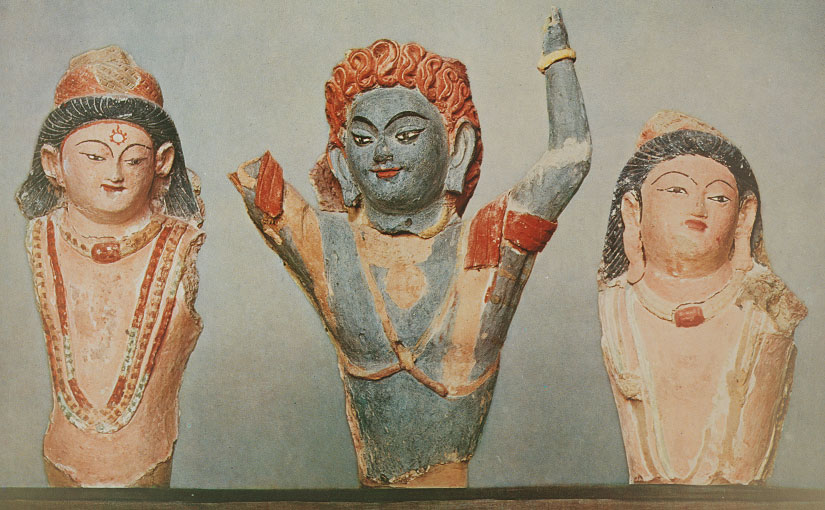Standing beside oversized reproductions of two issues of The Cork Examiner from May 8-9, 1916, Aedín Clements commented how delighted she is that Rare Books and Special Collections (RBSC) has such an extensive collection of historical newspapers from Ireland. She explained that these newspapers are important sources for understanding Irish society and, thus, must be preserved and made discoverable and freely accessible to researchers here and worldwide. This has become one of her many projects as Irish Studies librarian.
Aedín, a native of Dublin, studied Irish literature, language, and folklore at University College Dublin from which she earned her bachelor’s and library degrees. She also earned a master’s degree in English literature from Western Michigan University. In 2005, Aedin joined the Library as Irish Studies librarian. She was attracted to this job because of Hesburgh Library’s extensive 20th-century Irish language collection, one that covers a broad range of disciplines and includes children’s literature, Irish language and literature, traditional songs and ballads, and more. She admits a special place in her heart for the O’Neill Collection, which has a little something for everyone. In December 2015, Aedin also became Interim Head of the Area Studies and Global Affairs unit within the Hesburgh Libraries. Her expertise and work in Irish Studies are evident in many ways including invitations to speak at conferences and events and the multiple exhibits she has curated for RBSC. Her scholarship and service to the profession have been recognized by Notre Dame: Aedín was awarded the 2013 Rev. Paul J. Foik, C.S.C., Award by Hesburgh Libraries and was elected in September 2015 as a Faculty Fellow of the Nanovic Institute for European Studies.
Aedín has a list of to-dos that is perpetually growing because she is always on the lookout for enhancing existing areas of collecting strengths—18th- and 19th-century literature and history—and keeping up with all of the new or evolving research interests of faculty and students on campus. She is always thinking about how to make Hesburgh’s collections more accessible and, equally important, how to educate people about these collections. Recently, she partnered with a newly established network of librarians, the Libraries and Archives Group of the American Conference for Irish Studies (ACIS), to develop innovative ways for better developing collections. The network will take up this very issue at the upcoming roundtable discussion during the ACIS conference at Notre Dame, March 30-April 3, 2016.
After discovering that Hesburgh Libraries holds a wealth of sources documenting the Irish American perspective, Aedín developed an interest in Irish American history. When asked if there was a particular item that caught her attention, she smiled and said, “Yes, McGee’s Illustrated Weekly!” This was a newspaper founded by an American, James Redpath, who gave Americans a glimpse into Irish life, spattered with a bit of Irish and American humor, the latest fashion trends, and portraits of prominent Irishmen. Yet, Aedín’s love of the Irish language always draws her back. She is currently immersed in reading Visions of Ireland: Gael Linn’s Amharc Éireann Film Series, 1956-1964 by B. Mairéad Pratschke.
Aedín can often be found digging through the Irish collections in RBSC. None of her colleagues is ever surprised when she comes skipping down the hall with the biggest smile you can imagine, as she did when she discovered that we have a large collection of yet-to-be processed historical Irish newspapers. It turned out that this is where she unearthed the copies of the Cork Examiner. Aedín’s wide-ranging knowledge of and curiosity about all things Irish can be seen in her current exhibit, Easter, 1916: The Irish Rebellion, which is on display in Rare Books Special Collections through April 28, 2016.
ETA: Aedín Clements retired from Special Collection in the fall of 2023.



























